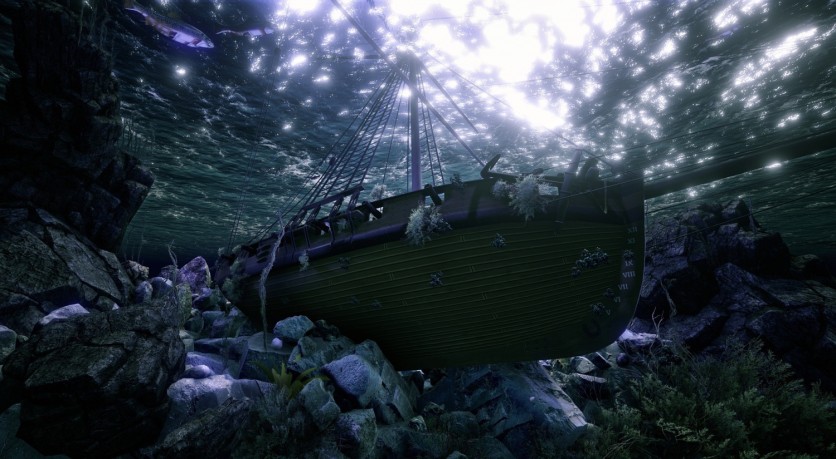Maritime archaeologists have made an exciting discovery, uncovering carvings of Sweden's renowned 17th-century warship Vasa and its sister ship Äpplet.
The same team that previously discovered Äpplet in December 2021 made these remarkable finds, according to a report by Divernet.

Ancient Carvings
Led by Vrak, the Museum of Wrecks in Stockholm, and Swedish Navy divers, the archaeologists had set out on the military vessel Furusund to document the hull of the ship through 3D filming.
During their initial dives, they stumbled upon wood-carved sculptures hidden behind the stern of Äpplet, including two large lions representing the national coat of arms displayed on the transom.
Another fascinating discovery was a smaller circular sculpture in the shape of an apple, which served as a nameplate for the ship, formally known as Riksäpplet.
The intact sculptures found on a retired and scuttled ship surprised the team. Jim Hansson, a marine archaeologist from Vrak, expressed his astonishment, stating that in his 30 years of diving experience, he had never come across such sculptures. He described the find as one of the most incredible experiences of his career.
Vasa and Äpplet were both commissioned by King Gustav II Adolf of Sweden in 1625 and were constructed side by side in Stockholm. Unfortunately, Vasa sank in 1628, a year before Äpplet's scheduled launch.
Äpplet, incorporating lessons learned from Vasa's demise, joined the fleet that transported troops to Germany when Sweden entered the 30 Years' War in 1630. The ship served the navy for three decades before being intentionally sunk in a strait at Vaxholm in 1659.
The Äpplet sculptures exhibit similarities to those found on Vasa but also display some differences, according to the archaeologists. They believe they have identified a depiction of Atlas the Titan on the Äpplet wreck, represented by a figure carrying what seems to be a globe. Such representation of Atlas is absent on Vasa.
Peder Sjöholm, the diving manager of HMS Furusund, expressed his awe at the discoveries, particularly the striking image of a gaping lion in the darkness.
Evolution of Shipbuilding
The investigation of the ship's stern construction at the wreck site allows a deeper understanding of the evolution of shipbuilding, particularly the transition from the unstable Vasa to the development of a massive, heavily armed ship like Äpplet.
The differences in construction and details between Vasa and Äpplet provide valuable insights into the shipyard builders' techniques. Odd Johansen, the museum director of Vrak, highlighted the significance of the discovery and emphasized the need for a museum to preserve the cultural heritage found on the Baltic Sea's seabed.
The Vrak Museum, part of the Swedish National Maritime & Transport Museums, has been open for less than two years but has already made remarkable discoveries like this.
The wrecks and artifacts in Baltic waters are remarkably well-preserved, offering an opportunity to salvage and conserve the Äpplet artifacts for future display. The decision rests with the county administrative board.
The ongoing research program "Forgotten Fleet," conducted in collaboration with Stockholm University and Riksbankens Jubileumsfond, has enabled Vrak and navy divers to investigate Vaxholm and make significant contributions to the understanding of maritime history.
The latest discoveries contribute to a deeper understanding of Sweden's naval past and showcase the incredible craftsmanship and artistry that adorned these historic warships.

ⓒ 2025 TECHTIMES.com All rights reserved. Do not reproduce without permission.




